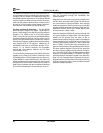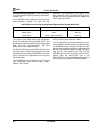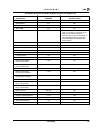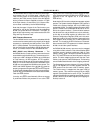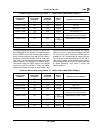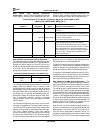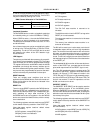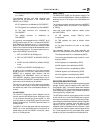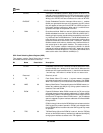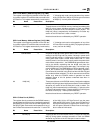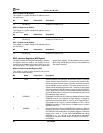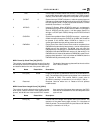
AMD
P R E L I M I N A R Y
74
Am79C930
The sleep state machine is returned to its idle state
(i.e., awake).
The memory bus arbitration state machine is re-
turned to its idle state.
The following registers and state machines which are
UNAFFECTED by assertion of the SWRESET bit
of SIR0[7]:
SIR0[7] and all of SIR2[7:0] and SIR3[6:0] are unaf-
fected by SWRESET.
TIR registers are unaffected by SWRESET.
TCR registers are unaffected by SWRESET.
TAI state machines are unaffected by SWRESET.
The 80188 controller is unaffected by SWRESET.
PCMCIA registers are unaffected by SWRESET.
ISA PnP registers are unaffected by SWRESET.
The ISA PnP state machine is unaffected
by SWRESET.
It is generally recommended that the SWRESET bit of
SIR0[7] should NOT be SET to a 1 unless the
CORESET bit of SIR0[6] has first been set to a 1. This
recommendation is to insure that the memory bus arbi-
tration state machine is not reset while the 80188 em-
bedded controller is executing an access. The proper
sequence for using the SWRESET bit should be:
1. SET the CORESET bit SIR0[6] to a 1.
2. SET the SWRESET bit SIR0[7] to a 1.
3. RESET the SWRESET bit SIR0[7] to a 0.
4. RESET the CORESET bit SIR0[6] to a 0.
An option to this procedure is to first insure that the
80188 controller is in the HALT state before the
SWRESET bit is asserted. However, note that the
FLASHWAIT and SRAMWAIT values are reset by
SWRESET; therefore, if 80188 operations are resumed
after the SWRESET has been performed, the perform-
ance of the 80188 may be affected.
The user may decide not to follow these recommenda-
tions, but in such a case, it should be recognized that
the 80188 may suffer from unpredictable behavior as
a result.
CORESET (SIR0[6])
The CORESET bit of SIR0[6] can be used to reset the
embedded controller and TAI sections of the
Am79C930 device, along with a few locations in the MIR
register space. When the CORESET bit is asserted,
then the 80188 section of the Am79C930 device will be
placed into reset, with behavior identical to that of a
standalone 80188 controller having its RESET pin as-
serted. TAI section of the Am79C930 device will also be-
come reset with all registers returning to their default
states, as will a few bits in the MIR register set.
The following is a complete list of registers and state ma-
chines that will become reset to default values with the
assertion of the CORESET bit of SIR0[6]:
(Note that some register locations’ default values
are UNDEFINED):
All TIR registers.
All TCR registers.
MIR8[1:0] are reset to 11b.
MIR9[5:4] are reset to 11b.
All TAI state machines are reset by the assertion
of CORESET.
The 80188 controller is held in RESET as long as the
CORESET bit is held at a 1 level.
The following registers and state machines are
UNAFFECTED by assertion of the CORESET bit
of SIR0[6]:
The ISA PnP state machine is unaffected
by CORESET.
The sleep state machine is unaffected
by CORESET.
The memory bus arbitration state machine is unaf-
fected by CORESET.
PCMCIA COR SRESET
The PCMCIA Configuration Option Register contains a
reset bit in location [7] which is labeled SRESET. When
SRESET is asserted, the entire Am79C930 device will
become reset as though the RESET pin had been as-
serted, except that the asynchronous logic which is
used to perform PCMCIA register accesses is
not
reset.
The following is a complete list of registers and state ma-
chines that will become reset to default values with the
assertion of the COR SRESET bit of PCMCIA COR[7]:
(Note that some register locations’ default values
are UNDEFINED):
All PCMCIA registers, except COR[7].
All MIR registers.
All SIR registers, except SIR0[7], SIR2[7:0],
and SIR3[6:0].
The memory bus arbitration state machine is re-
turned to its idle state.



